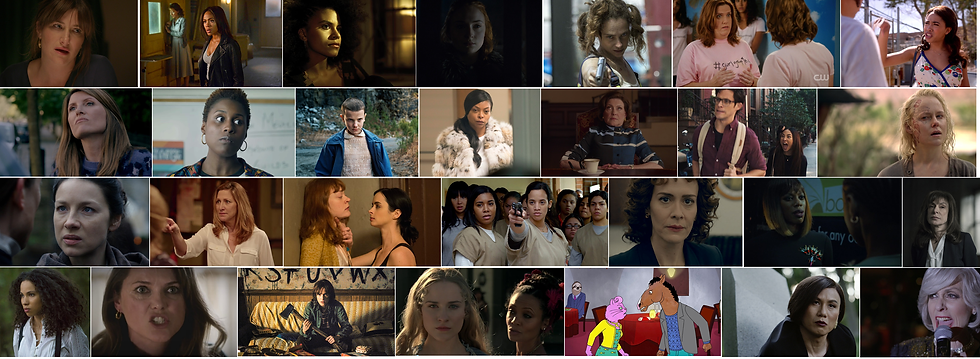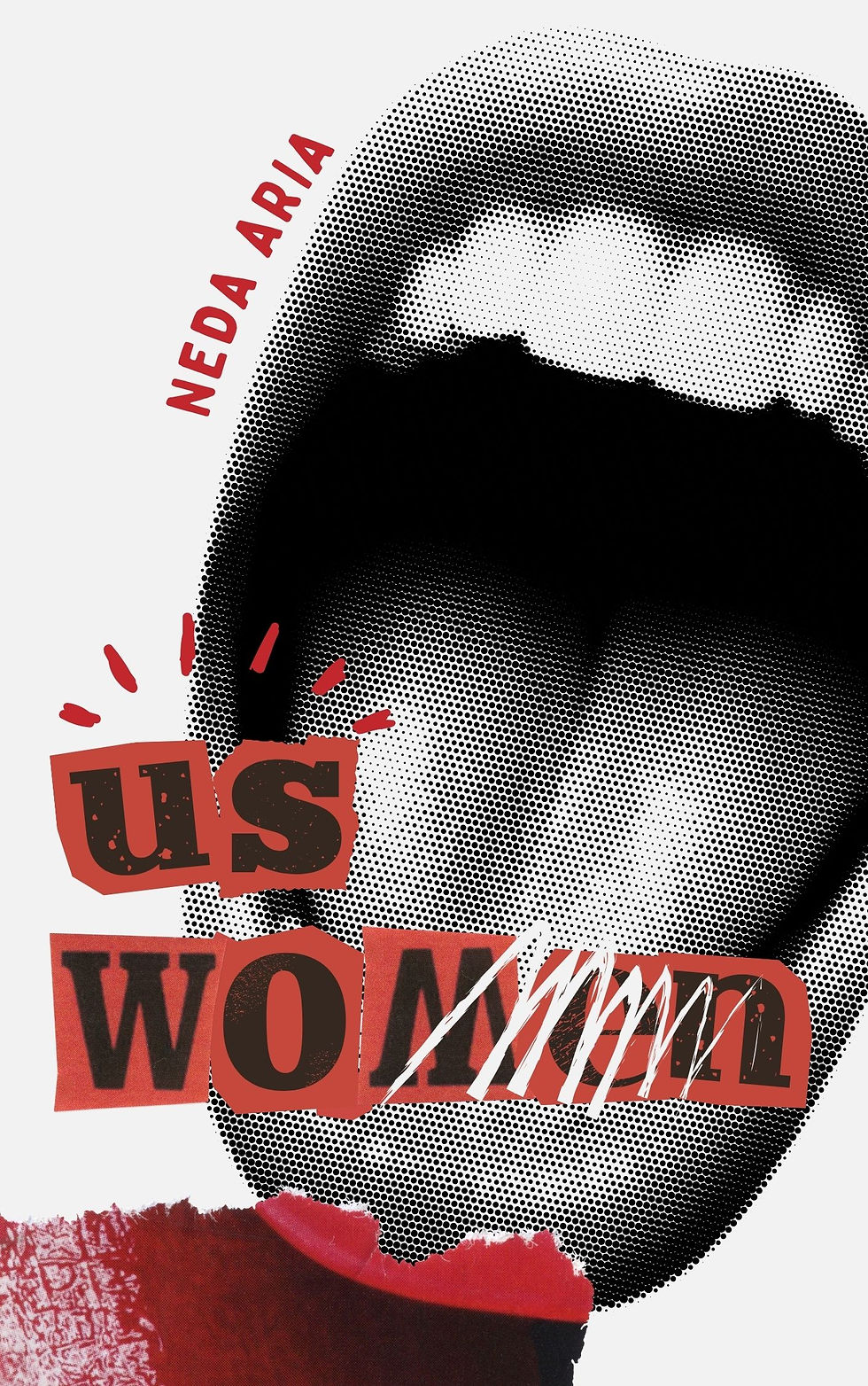Angry Women in Literature: Rage as a Narrative Force
- Neda Aria

- Aug 1, 2025
- 6 min read
Across literary history, anger in female characters has often been treated as aberration, pathology, or transgression. From Medea’s murderous wrath to Bertha Mason’s mad howls from the attic, women’s rage has long unsettled dominant narrative paradigms. Yet in recent decades, feminist literary criticism has reclaimed female anger as an expressive and narrative force, a legitimate response to systems of control, marginalization, and violation. In this article, I explore how rage, far from being a purely destructive emotion, functions as a crucial mechanism of subject formation, narrative propulsion, and political articulation in feminist storytelling and how I use it in my books.

Historical Repression and the Gendering of Anger
Anger has traditionally been construed as a masculine-coded emotion: assertive, rational, even heroic. Women, by contrast, have been expected to perform gentleness, restraint, and emotional decorum. Aristotle described anger as justifiable when arising from a perceived injustice, but this logic rarely extended to women in classical or modern literature. In canonical texts, female anger was typically associated with madness (as in Hamlet’s Ophelia), witchcraft (Macbeth’s Weird Sisters), or moral failing (Anna Karenina). The moral structure of these narratives punished female rage or rendered it unintelligible.
As Sara Ahmed (2010) notes, the “feminist killjoy” is vilified because her anger disrupts the affective consensus of comfort, politeness, or progress. In this framework, rage becomes evidence of disobedience rather than a signal of structural harm. For centuries, literary women have been allowed sorrow, hysteria, or self-destruction—but not fury as agency.
Feminist Narrative and Rage as Structuring Device
The feminist turn in literary studies, particularly since the 1970s, reframed women’s anger as a legitimate epistemological and ethical position. Texts by authors such as Audre Lorde, Toni Morrison, Margaret Atwood, Jean Rhys, and more recently, Elena Ferrante and Roxane Gay, have foregrounded rage as both content and formal principle. Anger is thematic as well as structuring plot, disrupting conventional arcs, and reorienting narrative sympathy.
Lorde’s seminal essay “The Uses of Anger” (1981) insists that anger can be a “clarifying and energizing” force. In literature, this assertion takes material form: in The Color Purple, Celie’s anger marks a turning point from subjugation to voice; in Beloved, Sethe’s violent past is not sanitized but framed as a historically rational, if morally difficult, response to enslavement. These stories do not resolve female rage through apology or redemption; they hold space for its ongoing presence as a trace of trauma and a tool for survival.
Narrative Functions of Rage
Female rage in literature often functions across three principal narrative axes: agency, disruption, and transformation.
Agency: Rage allows characters to act rather than merely be acted upon. In The Awakening, Edna Pontellier’s fury at social expectation propels her toward autonomy, however tragic the outcome. Her refusal to perform motherhood and marriage norms reconfigures her narrative trajectory.
Disruption: Anger destabilizes narrative norms. Stories organized around rupture, domestic upheaval, political insurrection, or psychological breakdown, often pivot on female characters who reject passivity. These moments of rupture demand structural reconsideration: the plot does not restore order but foregrounds its loss as meaningful.
Transformation: In many feminist texts, rage leads not to resolution but to metamorphosis. In Beloved, Sethe’s anger reshapes memory and maternal identity; in Woman at Point Zero, Nawal El Saadawi’s protagonist articulates rage as truth-telling in the face of patriarchal violence, culminating in an unapologetic embrace of death as liberation.
Contemporary Anger
In the 21st century, cultural shifts have seen an increase in texts that foreground angry women in both popular and literary domains. Novels such as Ottessa Moshfegh’s My Year of Rest and Relaxation, Lisa Taddeo’s Three Women, and Rachel Yoder’s Nightbitch engage anger through irony, exhaustion, and absurdism. These works reflect a cultural moment in which female rage is aestheticized and commodified, but also increasingly recognized as a site of narrative vitality.
Importantly, the legitimacy of this anger is no longer contingent upon moral justifiability or redemption. Even unpleasant, petty, or irrational forms of female fury are being explored without narrative punishment. Such portrayals challenge the lingering cultural discomfort with women who refuse to soothe, to explain, or to conform.
Feminine Rage as Method: How I Use It in my books such as Us, Women
In Us, Women, rage is a narrative method. It means I use feminine anger to generate momentum, to produce rupture, and to reassign meaning. My characters are not angry by accident. Their anger is designed to challenge form, disrupt familial scripts, and resist moral framing. Rather than treating rage as an emotional excess or cathartic release, I treat it as a form of intelligence, a way for women to see, name, and act.
The book is composed of interlinked first-person narratives, each centering a different woman’s experience across generational and cultural lines. Rage appears differently in each story, but in every case, it functions as a tool of self-definition. I never isolate anger from context; it emerges from material injustice such as silencing, abandonment, betrayal, erasure. It means I do not reduce it to victimhood. The women in Us, Women are often wronged, but they do not remain wronged. They convert rage into narrative strategy: they withhold, they contradict, they remember selectively, they rewrite others’ versions of events.
I use rage to fracture linear time. For example, in several stories, memory is not presented as stable or chronological, but as something that resurfaces when anger reactivates it. A character may begin narrating her current life, then pivot mid-paragraph to a buried scene of humiliation or betrayal, not because she lost control, but because the memory is the real origin of the story she is telling. The structure obeys the logic of rage, and for sure not the conventions of exposition.
I also use rage as a point-of-view filter. Many scenes in Us, Women are deceptively calm on the surface. But the internal narration is saturated with judgment, disillusionment, or a refusal to comply. I rarely make the anger explicit and it's all in my books such as Bella Donna and upcoming Trilogy by Outcast press (First Book is Red Wing); instead, it appears through diction, pacing, or what the narrator chooses not to say. The emotional tension builds in what remains unsaid. This technique allows readers to experience rage as sustained resistance.
Another key technique is the absence of resolution. I do not offer reconciliatory endings (mostly). Instead, I show women choosing distance, silence, or ambiguity. Also, the rage is not explosive with guns and blood and cleaver (precisely in Us, Women, Counting Crows, and Bella Donna) but it is epistemic. She chooses to know, and to leave that knowledge unreconciled. In Us, Women, this refusal to explain, forgive, or finalize becomes an act of narrative sovereignty.
And finally, the voice layering. In many of the stories, women's voices are juxtaposed or intercut across time, space, or memory. I never position one voice as the full truth and you can see this in all my novels and novellas. Instead, what I do is the use of the multiplicity itself enacts a feminist resistance to narrative closure. Rage becomes dialogic, generational, inherited and revised. Mothers and daughters often express the same rage in opposite ways; one through obedience, the other through departure (can be seen in Counting Crows). This layered approach allows me to examine how anger is not only personal but cultural, and how it mutates over time.
So, the representation of female anger in literature has evolved from silenced deviance to expressive power. In feminist storytelling, rage is not simply an emotional response but a narrative strategy and a way of marking harm, demanding redress, and imagining new relations. As a force of both disruption and creation, anger legitimizes the experience of being wronged while resisting closure or containment. And this shift has implications for how we read character, structure, and voice.

References
Ahmed, Sara. The Cultural Politics of Emotion. Edinburgh: Edinburgh University Press, 2010.
Lorde, Audre. “The Uses of Anger: Women Responding to Racism.” In Sister Outsider: Essays and Speeches, 124–133. Berkeley: Crossing Press, 1984.
Rhys, Jean. Wide Sargasso Sea. London: André Deutsch, 1966.
Morrison, Toni. Beloved. New York: Alfred A. Knopf, 1987.
Euripides. Medea. Translated by Diane Arnson Svarlien. Indianapolis: Hackett Publishing, 2008.
Ferrante, Elena. My Brilliant Friend. Translated by Ann Goldstein. New York: Europa Editions, 2012.
El Saadawi, Nawal. Woman at Point Zero. Translated by Sherif Hetata. London: Zed Books, 1983.










Comments